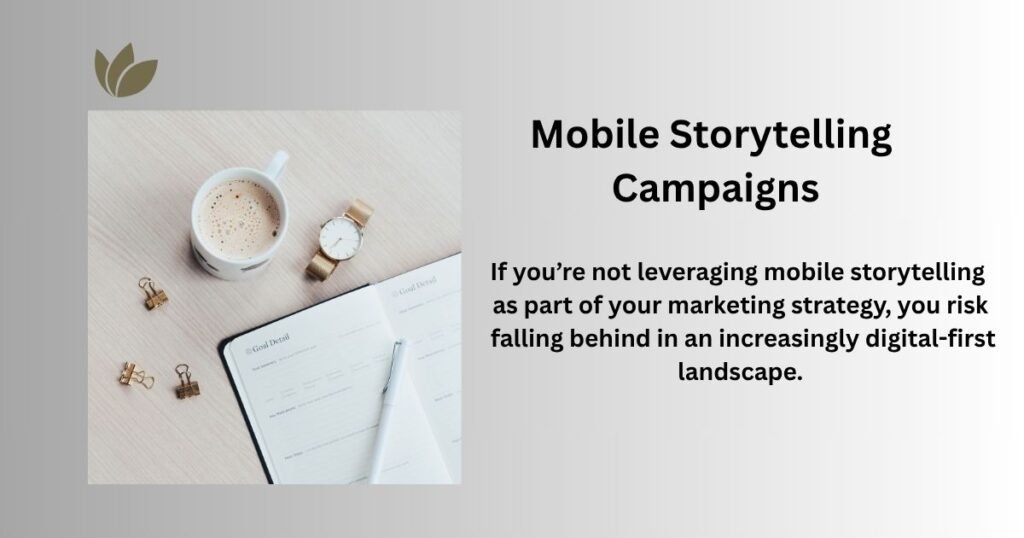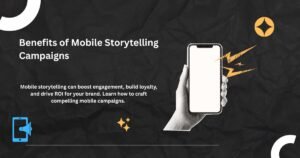Understanding Mobile Storytelling in Marketing and Why It Matters

The digital era has irreversibly shifted how we consume and share content. With over 6.9 billion smartphone users worldwide in 2023, it’s no stretch to say that our mobile devices have become an extension of ourselves. Whether it’s swiping through Instagram stories, watching TikToks, or scrolling YouTube Shorts, we’re constantly engaging with bite-sized narratives that fit seamlessly into our busy lives. This is where mobile storytelling in marketing comes in.
If you’re not leveraging mobile storytelling as part of your marketing strategy, you risk falling behind in an increasingly digital-first landscape. But what exactly is mobile storytelling, why does it matter, and how does it work in practice? This blog explores these key questions and provides actionable insights to help you integrate mobile storytelling into your marketing campaigns.
What Is Mobile Storytelling in Marketing?
At its core, mobile storytelling in marketing is the art of creating and delivering narratives designed specifically for mobile devices. This form of storytelling leverages the unique features of smartphones, including their compact screens, swipe-and-scroll functionality, and multimedia capabilities like video, text, animations, and sound.
Unlike traditional advertising, mobile storytelling seeks to capture attention quickly and keep users engaged through compelling, bite-sized narratives.
Key Characteristics of Mobile Storytelling
- Short and Sweet: Attention spans are short, so mobile stories typically last between 5 and 60 seconds.
- Visually Captivating: High-quality visuals and dynamic animations are essential to grab attention immediately.
- Platform-Specific: Stories are created to fit the format and tone of platforms like Instagram, TikTok, or Snapchat.
- Interactive: Mobile storytelling often includes polls, clickable links, and swipe-up features to boost engagement.
Rather than selling outright, this approach builds emotional connections by presenting a story that resonates with the target audience, subtly tying that narrative back to the brand.
Why Do We Need Mobile Storytelling in Marketing?
Marketers today face a noisy, competitive digital landscape. Traditional strategies like banner ads or lengthy prose don’t resonate anymore, especially for mobile users. Mobile storytelling bridges the gap between brand messaging and a consumer’s everyday mobile habits. Here’s why it’s essential:
1. Mobile is Dominating Content Consumption
More than 58% of web traffic now comes from mobile devices, and that number isn’t slowing down. Mobile storytelling ensures your brand remains front and center in a space where your audience spends most of their time.
2. Increased Attention and Engagement
Traditional ads interrupt. Stories engage. Great mobile storytelling captures a user’s attention within seconds and holds it. Micro-narratives align with how users scroll, swipe, and tap, making them more likely to absorb your message.
For example, the “Swipe Up to Shop” feature on Instagram stories generates higher click-through rates by delivering compelling visuals paired with a call-to-action.
3. Emotional Storytelling Drives Conversions
According to research, 92% of consumers want brands to create advertisements that feel like stories. Why? Stories inspire emotion, and emotion drives decision-making. A well-crafted mobile narrative fosters stronger brand connections, resulting in increased trust, loyalty, and sales.
4. Perfect for Time-Conscious Audiences
Today’s audience is strapped for time, making it hard for them to consume lengthy content. Mobile storytelling works within this reality by delivering digestible, snackable pieces of information.
How Does Mobile Storytelling Work?
Now that we know why it’s important, let’s break down how mobile storytelling works. The process revolves around a few key actions, from understanding your audience to leveraging platform-specific features.
1. Define Your Target Audience
Your story won’t resonate unless you know who you’re talking to. Start by building detailed personas for your target audience. Ask questions like:
- What platforms do they use most (Instagram, TikTok, YouTube)?
- What type of content do they engage with (funny, serious, inspiring)?
- What pain points or aspirations do they have?
Having clear answers to these will help you create more tailored, effective stories.
2. Tailor Stories for Each Platform
Platform matters. A TikTok story won’t work the same as an Instagram story. Different platforms have different formats, user behaviors, and expectations.
- Instagram and Facebook Stories are great for interactive polls, behind-the-scenes content, and short product showcases.
- TikTok operates best with highly creative, authentic, and trend-based storytelling.
- Snapchat excels for time-sensitive offers and playful, engaging stories aimed at younger demographics.
- YouTube Shorts tend to work well for teaser content and bite-sized tutorials.
3. Start with a Strong Hook
The first few seconds are critical. Mobile users decide quickly whether to keep watching or scroll away. Open with a hook that grabs attention immediately. This could be:
- A startling statistic or obvious problem.
- A quick, intriguing visual.
- A question that makes viewers curious about the answer.
For instance, if you’re marketing a coffee subscription service, you might start with, “Ever wondered how your morning coffee transforms from bean to brew?”
4. Use High-Impact Visuals
Visually compelling content is everything on mobile. Use:
- Bold text overlays to convey key points.
- Engaging animations to keep the viewer immersed.
- High-definition images or videos that stay crisp on small screens.
Tools like Canva and Adobe Premiere Rush can help create visually stunning stories quickly.
5. Make It Interactive
One of the best ways to engage a mobile audience is through interactive storytelling. Features like polls, quizzes, swipe-ups, and “tap to reveal” mechanics encourage users to take action while keeping them engaged.
For example, a luxury travel brand could ask viewers to “Tap where you’d go next” followed by clickable destinations.
6. Share a Clear Call to Action
The best mobile stories not only entertain but also lead viewers to the next step. Whether it’s “Swipe up to shop,” “Learn more,” or “Tap here to book,” the CTA should be clear and frictionless.
Understanding Mobile First Video Thumbnail
Successful Examples of Mobile Storytelling
Airbnb’s Instagram Stories
Airbnb mastered mobile storytelling by featuring mini travel stories from real customers. Each story showcased unique locations, cultural experiences, and cozy stays, ending with a CTA to “Find your next stay.”
Nike on TikTok
Nike uses TikTok’s platform to share authentic, user-generated content from athletes and influencers. By blending short motivational stories with product placements, they encourage customers to be active while subtly promoting their gear.
Starbucks Customer Polls
Through Instagram polls, Starbucks invited users to vote for their favorite seasonal drinks. This interactive campaign not only entertained followers but also provided Starbucks valuable data on customer preferences.
What’s Next for Mobile Storytelling in Marketing?
The popularity of mobile devices creates endless opportunities for marketers to connect with audiences in meaningful, engaging ways. To stay ahead, focus on creating stories that resonate emotionally, leverage platform-specific features, and emphasize interactivity.
If you want to stand out in today’s fast-paced, competitive market, mobile storytelling can’t be an afterthought. It’s time to make it a core part of your marketing strategy.






